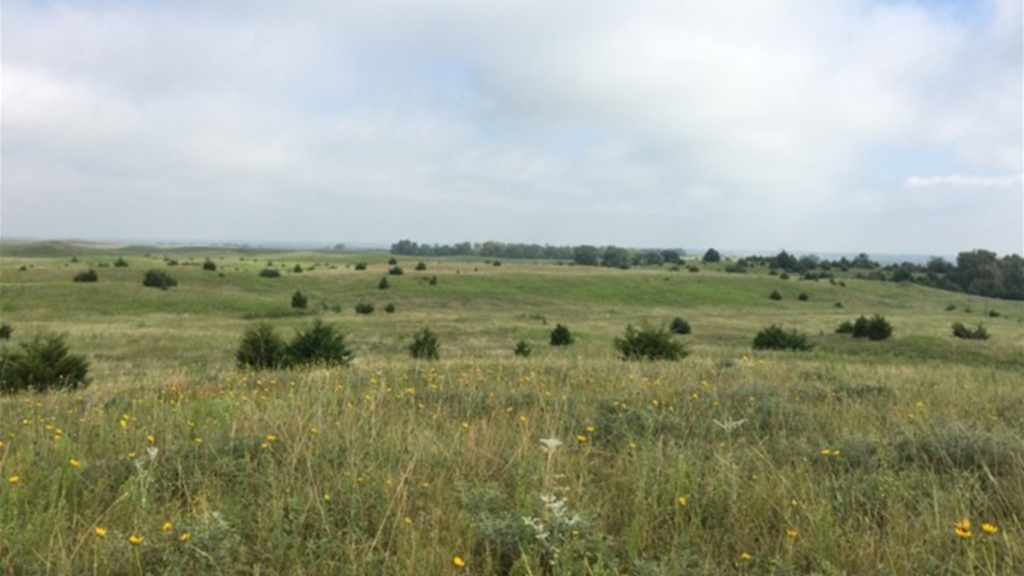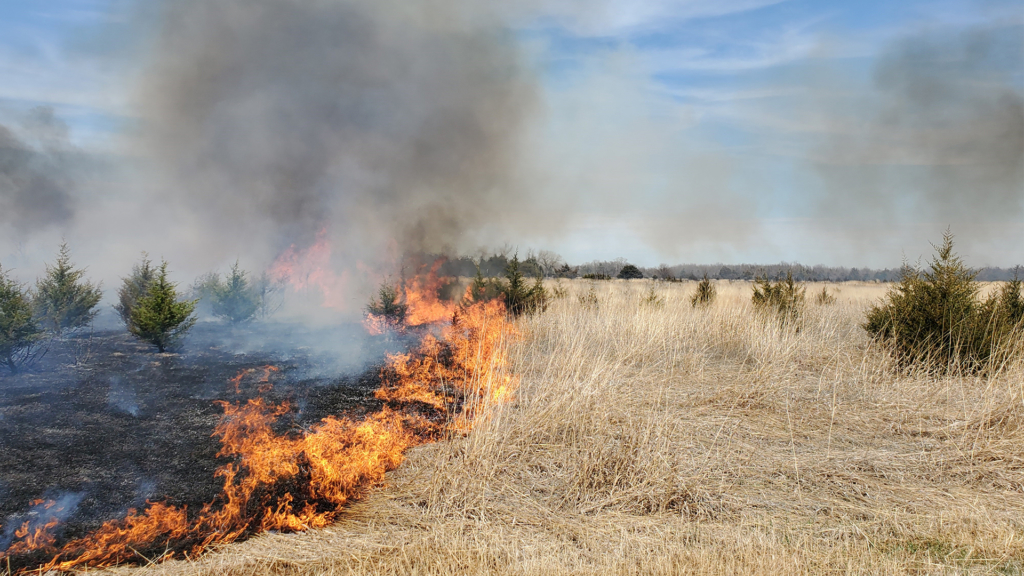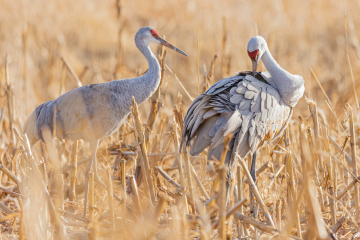Habitat Happenings – Nebraska’s Grasslands Under Threat

Did you know that cattle out number people 4:1 in Nebraska? The livestock industry powers Nebraska’s agriculture economy with $6.5 billion in cattle sales annually. Thousands of family ranches manage the vibrant grasslands found throughout Nebraska. These operations recognize that without management of their grassland their ranches will not remain profitable. This has helped instill tremendous land stewardship in these individuals.
Unfortunately, eastern red cedar trees are spreading at an unprecedented rate across Nebraska’s grasslands and threatening the economic profitability of this industry. These trees can live upwards of 75 years and can produce thousands of seeds each year which are then spread across the grasslands by birds and other animals. Since 1990 eastern red cedars have spread at a significantly higher rate today compared to the past because as more acres are encroached the seed source significantly increases. The increase in eastern red cedar ’s leads to a decrease in grass and hay needed for the cattle food source. It is estimated that 7.5 million acres are at risk in the near term to woody invasion. In 2019, this invasion resulted in a loss of over 530,000 tons of herbaceous productivity. The September 2021 United States Department of Agriculture estimate for “good” forage grade grass/hay ranged from $125 - $145 per ton. This productivity loss translates to a $76.9 million dollar annual loss in revenue for just the grass/hay production. The full economic impact including beef production is estimated to exceed $150 million annually.

The invasion of grasslands by eastern red cedar and other woody species not only negatively impacts ranchers bottom line it can also have tremendous impacts on grassland birds like pheasants, prairie chickens, and Western Meadowlarks. A recent A recent analysis by Cornell University highlighted that grassland birds have been particularly impacted with 59% of species experiencing population declines. Grassland bird populations have fallen by 53% since 1970, the steepest decline of all grassland species. Western Meadowlarks experienced some of the steepest declines with a 25% decline in population over the last 55 years. As the amount of eastern red cedar increases, diversity of grassland bird species decreases. Even at one to two trees per acre, eastern red cedar can negatively affect habitat use. This low-density infestation is especially problematic for area-sensitive species like Greater Prairie Chicken and Sharp-tailed Grouse. These species require thousands of acres of grasslands in a localized area. As portions of the landscape become overrun by eastern red cedar these species will no longer be found.
Help is on the way! The Rainwater Basin Joint Venture Partners including Ducks Unlimited, Natural Resources Conservation Service, multiple Natural Resources Districts, Nebraska Game and Parks Commission, Pheasants Forever, The Nature Conservancy, U.S. Fish and Wildlife Service, U.S. Forest Service, and many others are leveraging resources to help landowners address eastern red cedar encroachment. Many methods are being implemented including mechanical removal, prescribed fire, and chemical application.
















